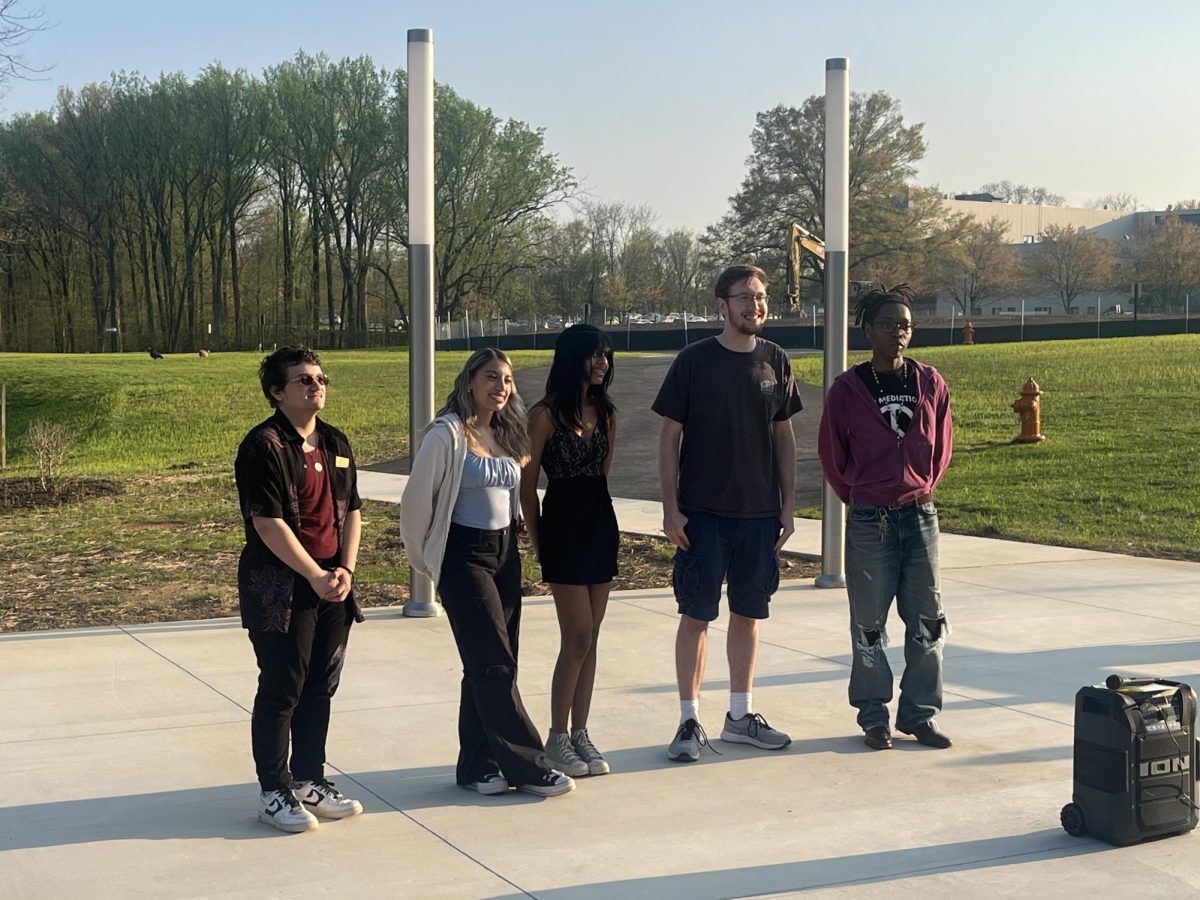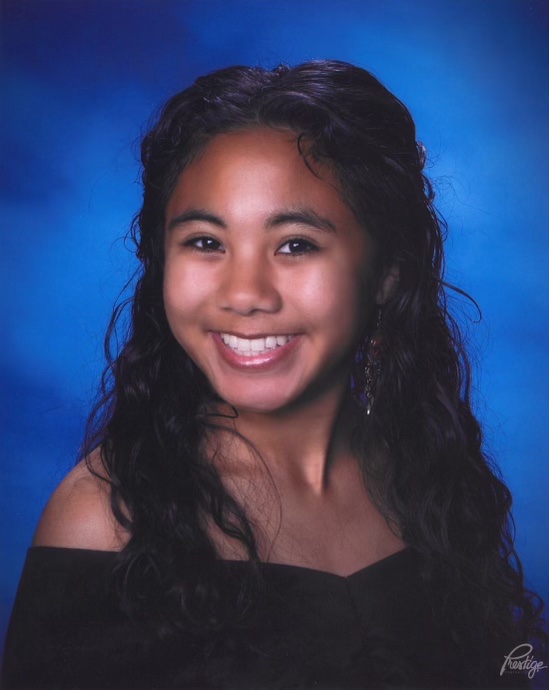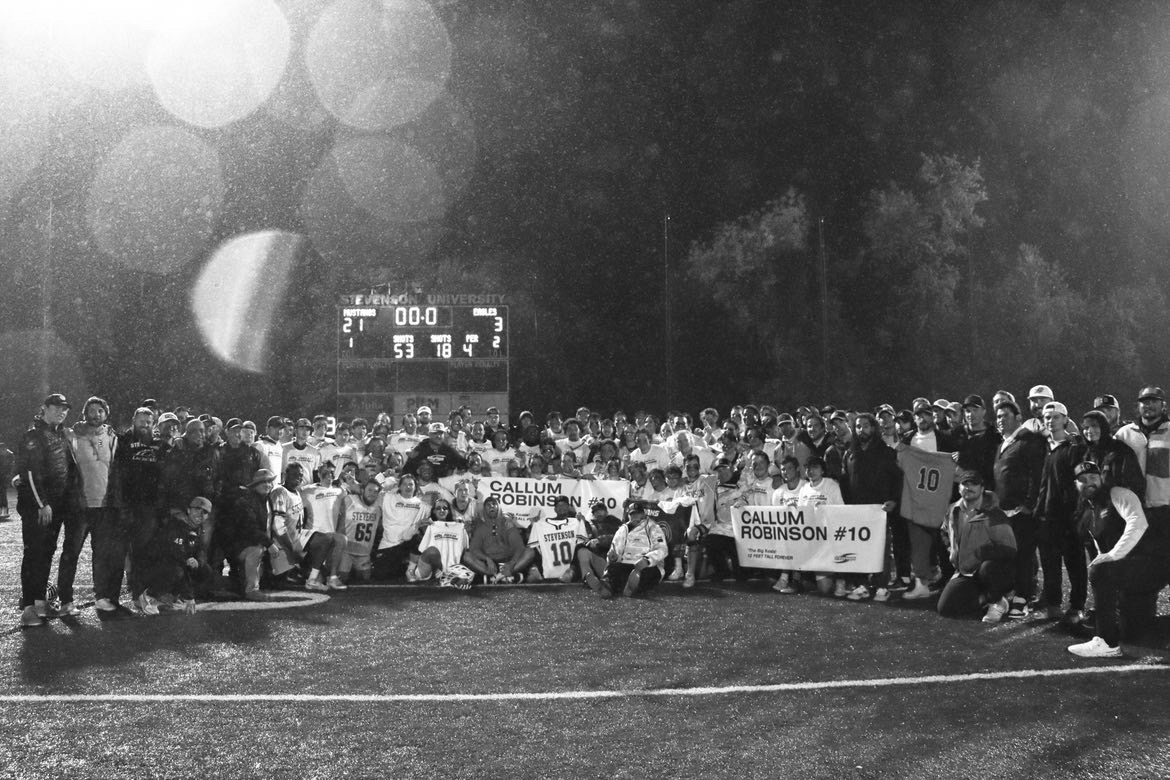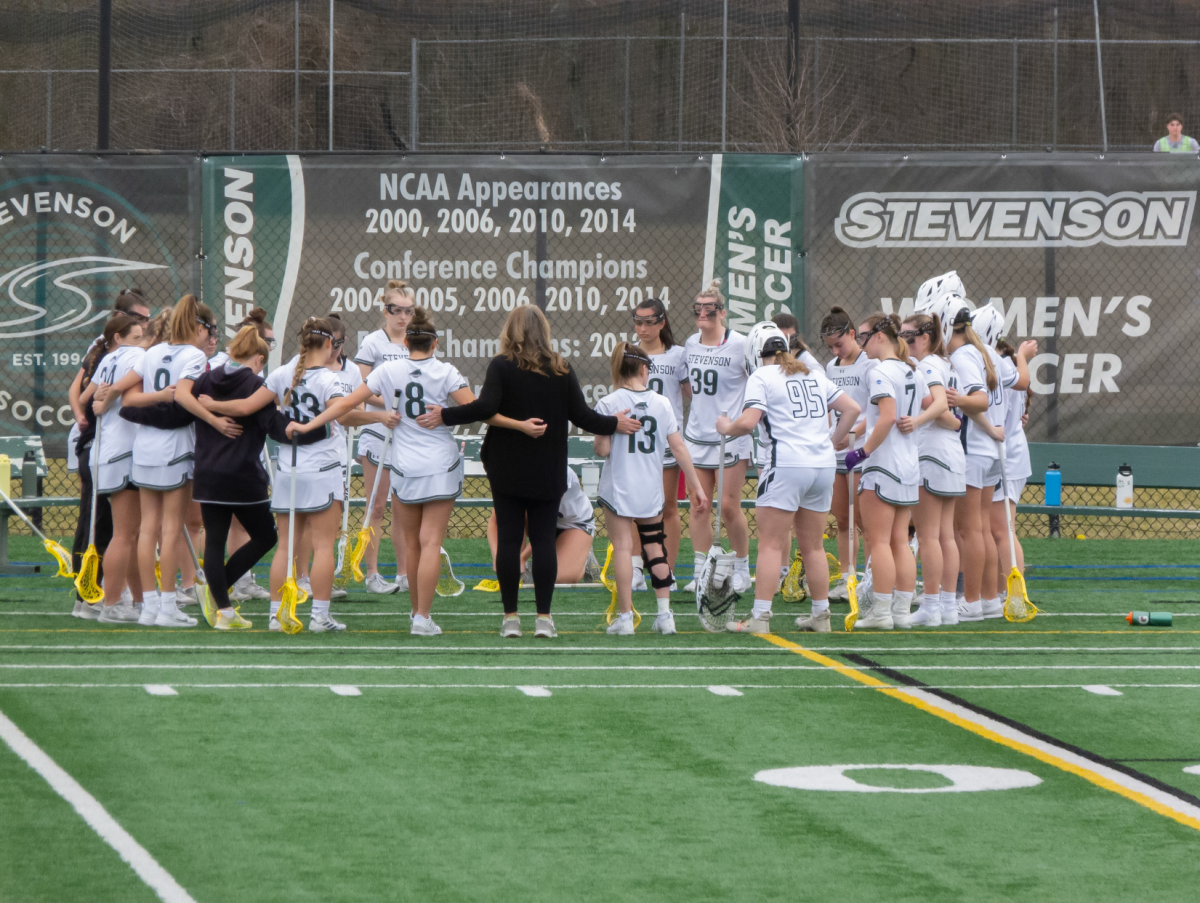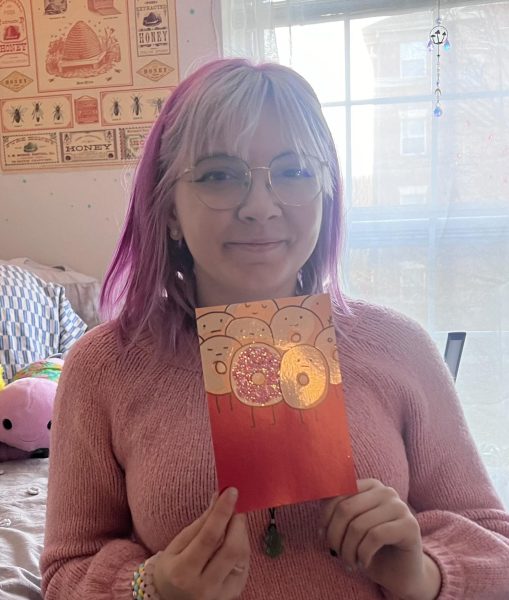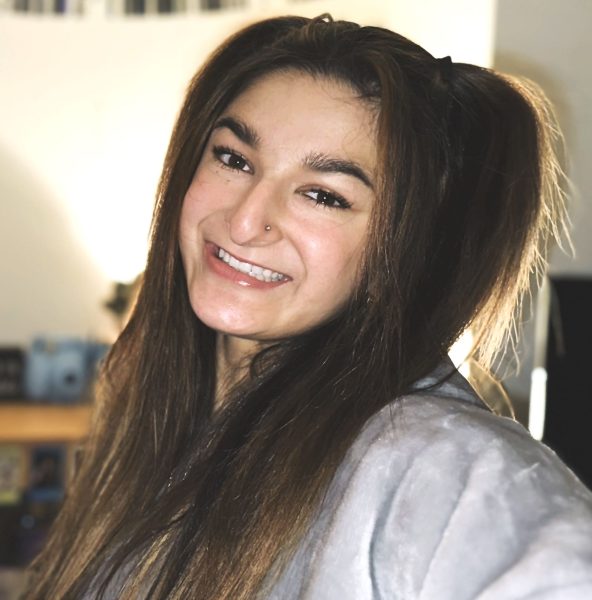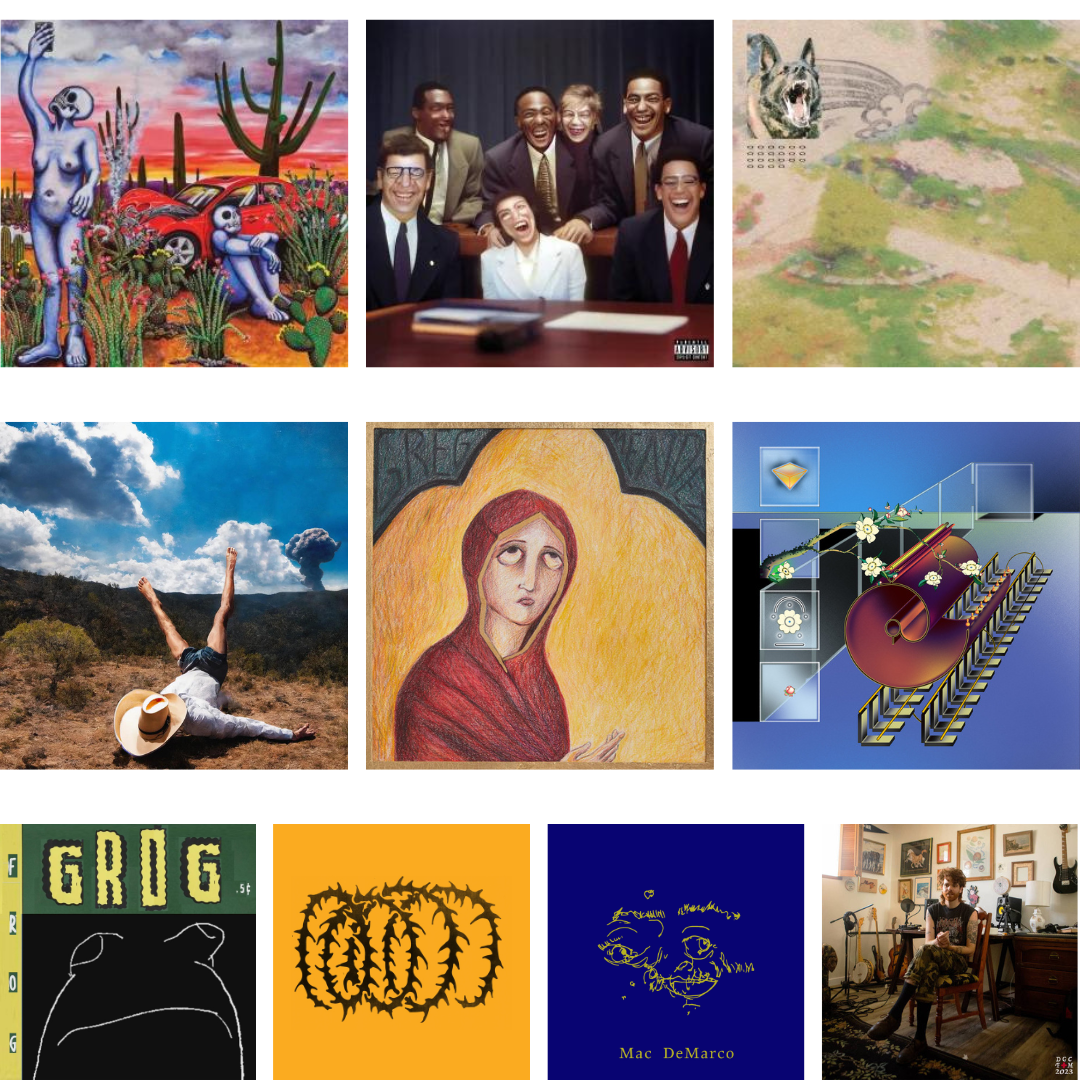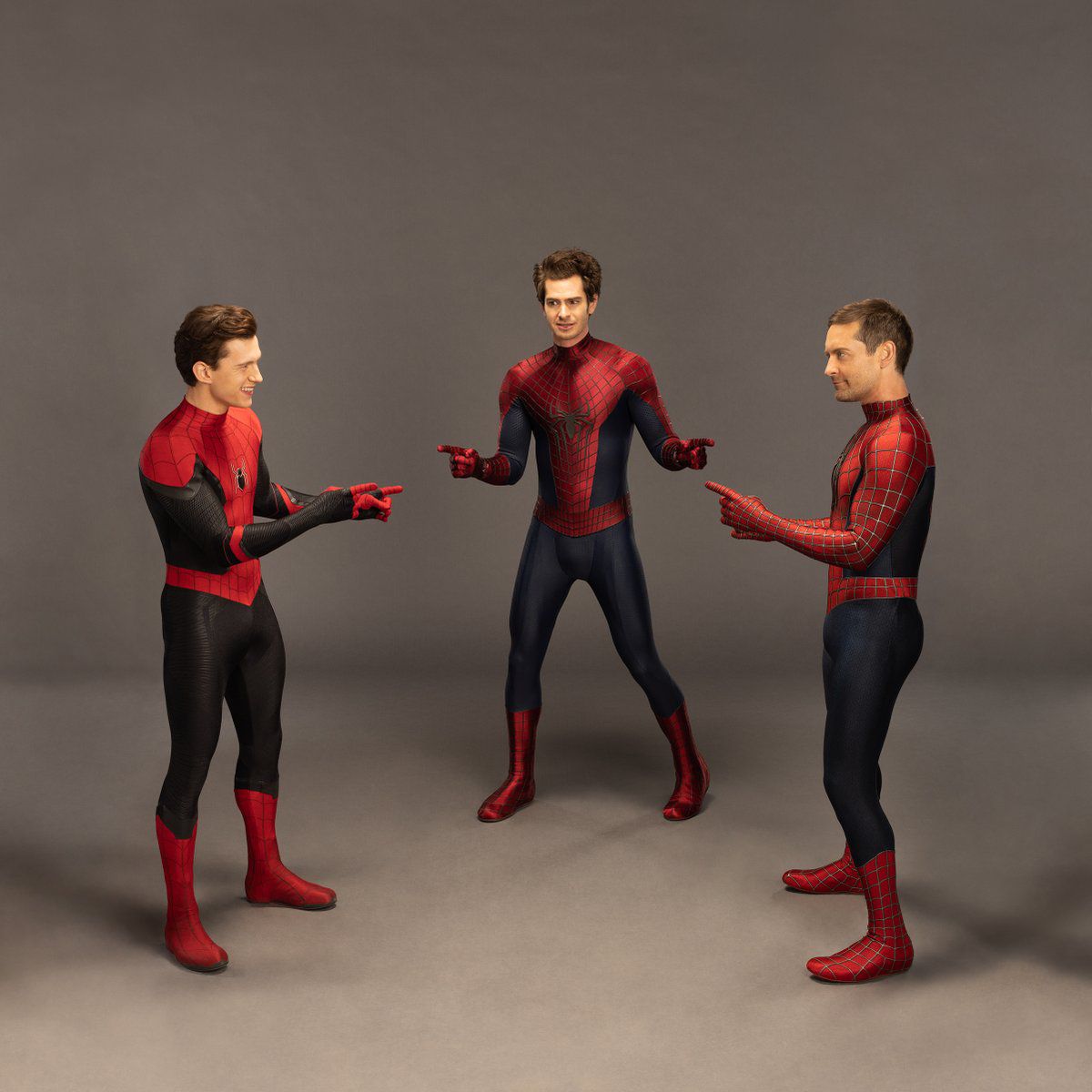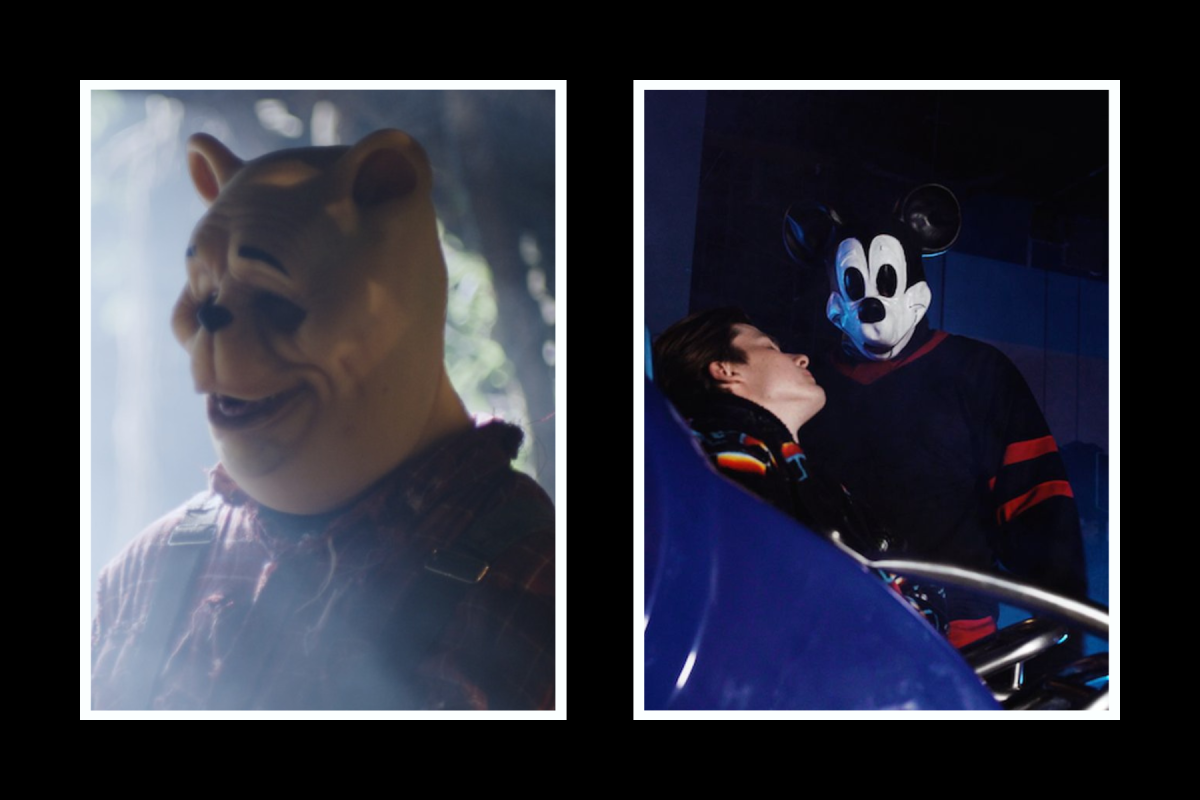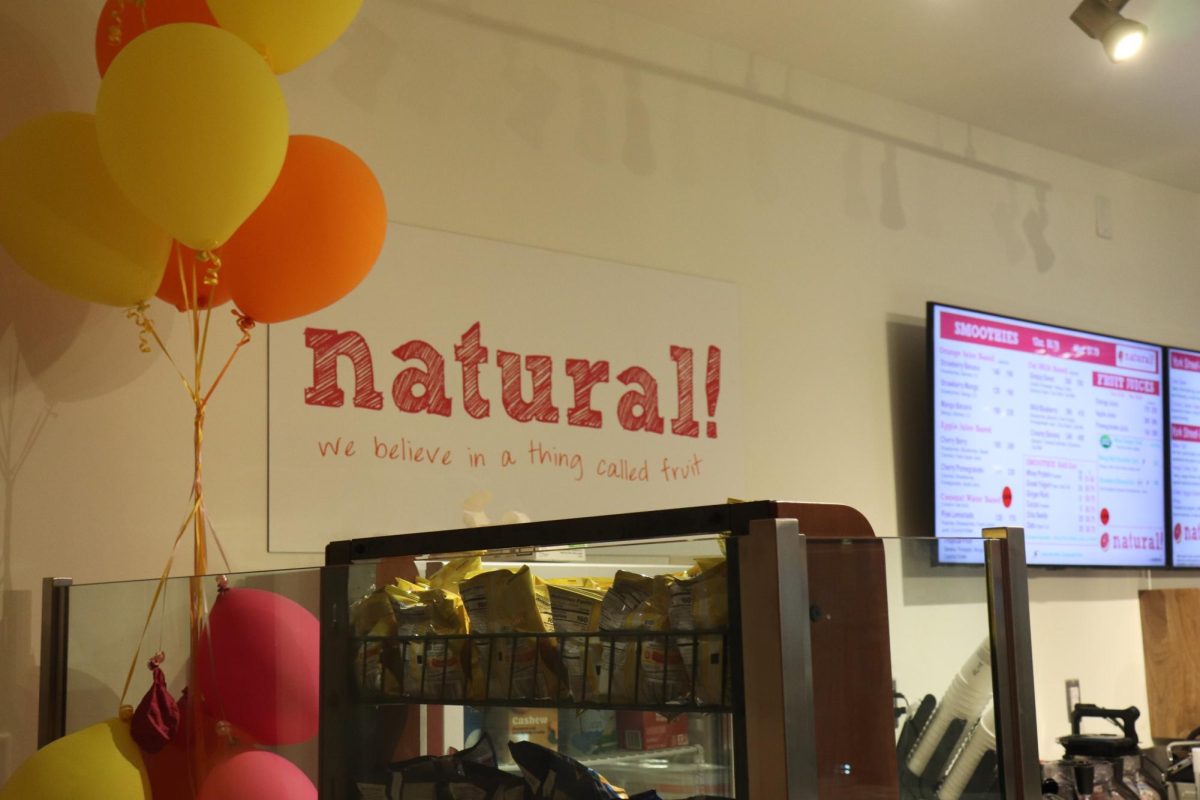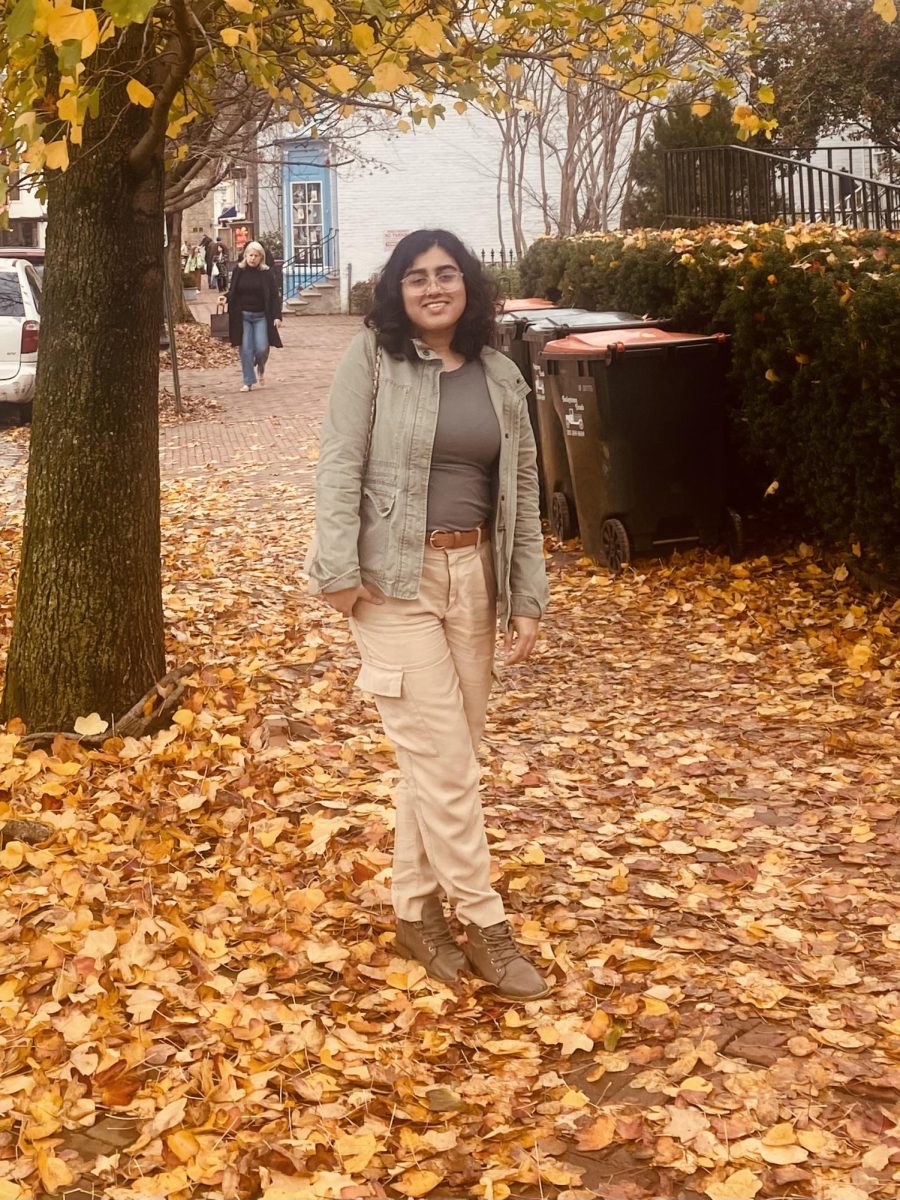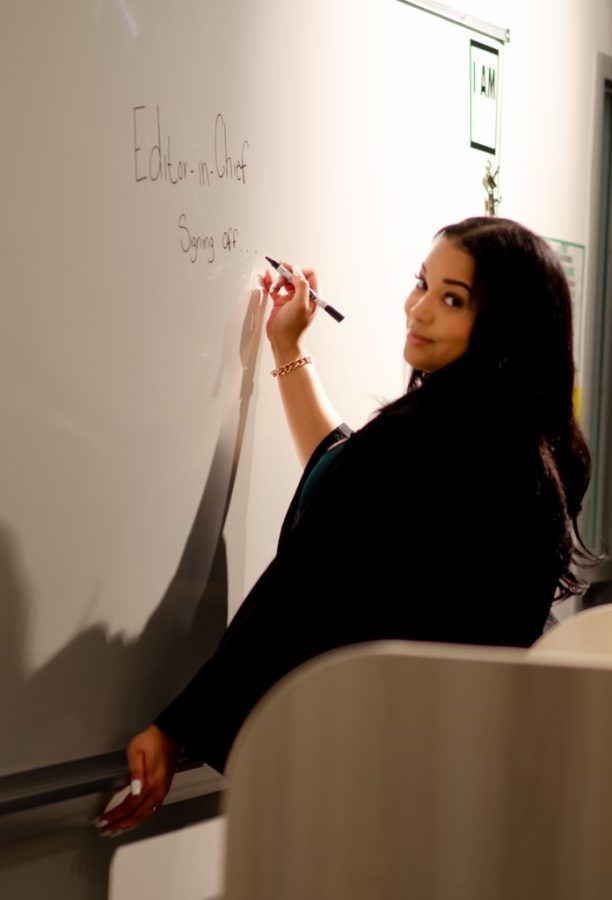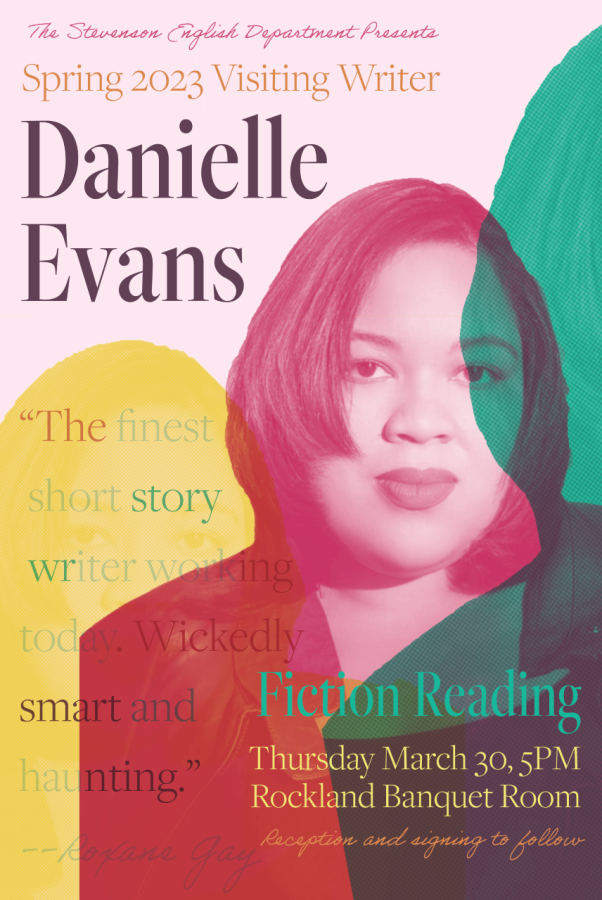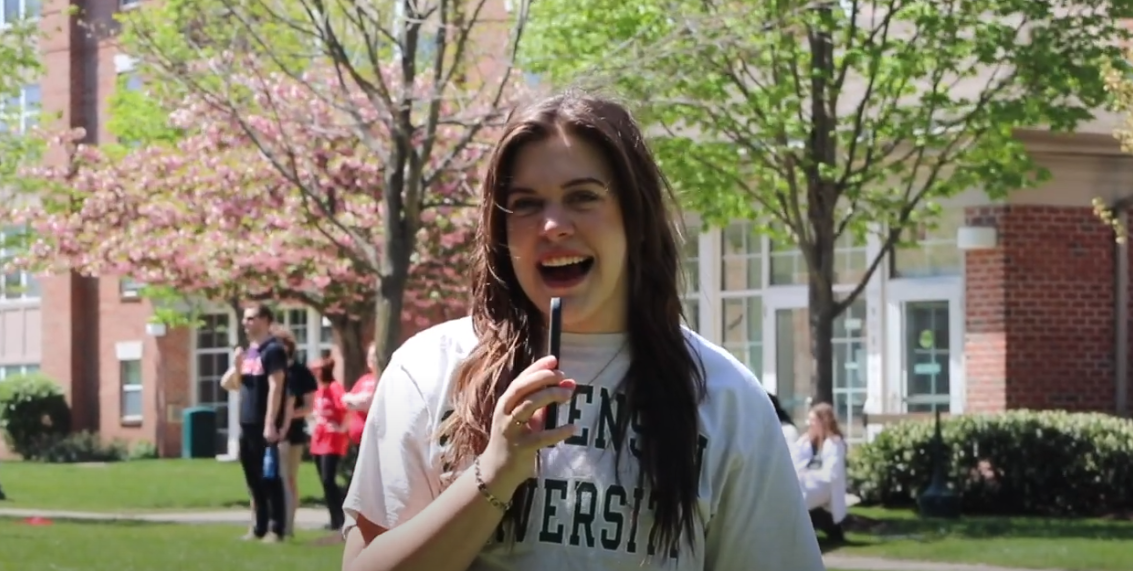By: Kelly Mulligan
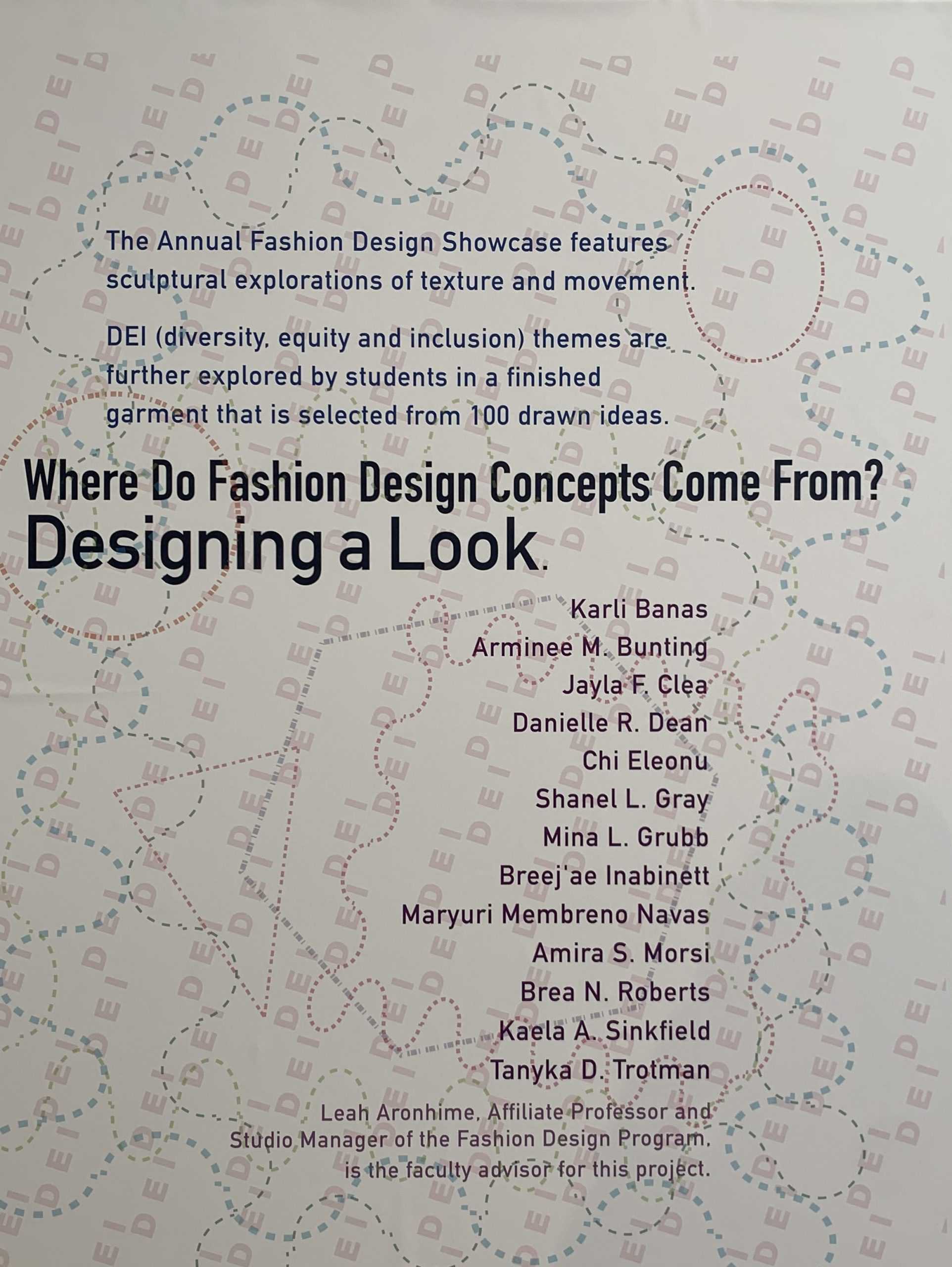
Can fashion be a poignant expression of cultural diversity? That was a question asked and answered by affiliate professor and Studio Manager of the Fashion Design program, Leah Aronhime, and her students in the showcase: “Designing a Look: Where Do Fashion Design Concepts Come From?”
The exhibition was on display on the second floor of the Manning Academic Center between December 2021 and February 4th, 2022.
The concept of the show was to “show non-fashion designers how we come up with our designs,” said Professor Aronhime, director of the showcase. “There is a ton of research and concept development that goes into it.”
“People just look at fashion as being very trivial,” Aronhime said about the goal of the showcase. “And they just don’t realize the engineering that goes into it, the thought that goes into it, and the research. And [we] really wanted to show that.”
The students of the Concept Development course were given three concepts to consider: texture, movement, and DEI (Diversity, Equity, and Inclusion). Creators were asked to consider their backgrounds, cultures, and community as the inspiration for their sculptures and garments. Students were also asked to produce 100 garment and sculpture sketches before beginning their production process.
“Usually in fashion- you make a mood board, you get inspiration from other collections,” says Karli Banas, senior Fashion Design student. “But in Concept Development, you have to make your own concept- your sculpture IS your inspiration, which makes it a challenging class, but also makes some really cool designs.”
As her project’s focus, Karli Banas described the diversity within our own minds. “Our theme was diversity, equity, and inclusion, and I decided to focus on the diversity of our minds and our ways of thinking,” said Banas. “For my sculpture, I wanted it to look like the inner workings of our mind.”
“Daydream Dress,” a cotton fabric dress created by Banas, quite possibly the sparkliest piece in the collection, showcases a color-block white and bubble gum pink dress, with a pink bubble skirt and matching pink sash across the top.
The extravagance of the dress stood out by the sheer number of sparkles featured. According to Banas, it was completely intentional. “I wanted my dress to be pretty and sparkly because I wanted to show that people can be fine on the outside, but they can be going through something difficult- mentally,” said Banas. Her garment perfectly matches the concept she created in her sculpture, titled “Deep Thought.”
“For my sculpture, I wanted it to look like the inner workings of our mind,” said Banas. “So, I used the white pipe cleaners as the background, and then I used the pink pipe cleaners as a thought traveling through and I connected all of the pink ones [together]. I wanted the pink to move slowly through the sculpture to show how people hold on to certain thoughts because of overthinking.”
Banas added, “Mental health is something that is really important to me. And I feel like even though we are supposed to be the most aware generation about our mental health, there are still a lot of people who struggle to speak up and ask for help, and I like that my sculpture and my dress are able to convey that message.”

Arminee Bunting, a senior Fashion Design student, created two very powerful and moving pieces that reflect the emotions and influences of the Black Lives Matter movement. “I wanted to show how we are restricted in certain situations,” said Bunting. “I wanted to bring attention to police brutality and all racially motivated violence against black people.”
“Restricted Body,” Bunting’s sculpture showcased in the exhibit, is a mold of a woman’s bust and torso. The mold is constructed of newspaper clippings that describe the horrific murders and attacks on black men, women, and children through police brutality. The words “BLACK LIVES MATTER” are painted across the body, covered by long silver chains that drape across the sculpture. “The chains and wires are representing the restriction of power in black people when we are put in certain situations,” Bunting said.
“Sometimes, black people are put in situations that are like chains restricting them and they have to breakthrough in order to get out of that situation,” said Bunting. “The chains also represent the emotions that come with being black and having to be cautious because of what has been going on and continues to go on around the world.”
Bunting’s garment, “Hidden Figures,” is a black floor-length evening gown made of velvet fabric, mesh lace fabric, cotton fabric, and boning. The dress covers the entire body, including lace fabric that covers the face and head.
“I wanted to show how they do not see black people as human beings sometimes,” said Bunting. “I wanted to represent how we are invisible or hidden to some by creating a piece that covers the face, arms, and neck. I wanted to do an evening wear dress to represent no matter how innocent a black person looks; they can be the next target because violence against black people has no looks.”
The message of Bunting’s sculpture and the garment was the most important and favorable part of her exhibition piece. “No matter how I look or whatever my education level may be, at the end of the day, I’m going to be black,” Bunting said. “There’s nothing I can change about that.”
Danielle Dean, a senior fashion design major, created sculpture and garments “Entwined Elements” and “Goddess Thaila.” Half of the sculpture is created from folded newspaper pages, while the other half displays white graph paper that encircles the body. The garment contains a blend of cotton and polyester fabrics, cardboard to support the shoulder pads decorated in beads, dainty chains that drape the top of the garment, and an asymmetrical skirt, decorated in folded bandana-like pieces of fabric.
Dean describes the sculpture and garment combination are two separate parts that make one whole piece. “The [sculpture] is [made of] newspaper, which ideally is supposed to represent poverty, work class- typical standards, and the [garment] is more of the upper-class- the elegant, the luxury,” explained Dean.
“But putting them together,” Dean said, “is bringing the two together and realizing that anyone that is middle class can still have money and anyone that has money is also struggling in life, realizing that there is a lot of difference and also a lot of similarities between the two, and understanding that stereotypes are very much real and very much out there and you can’t judge a book by its cover.”
Dean opened up and described the personal experiences that fueled her passion for her exhibition piece. “Growing up I was judged,” said Dean. “[People would say] ‘Oh, you don’t have the best things.’ My family was upper-middle-class, and just because I don’t act or dress that way doesn’t mean I’m not that way.”
Dean promotes the ideology of “Don’t judge a book by its cover” in her exhibition pieces. “Because you don’t know where that person came from,” said Dean. “You don’t know what they’re going through. Always be nice and be respectful and realize that everyone’s different at the end of the day but we’re all people.”
The designers and artists of this collection believe it was a very meaningful exhibition of the artistic genius of Stevenson students, as well as the importance of sharing artistic messages. Each student had a different explanation as to why.
“Everyone has a different vision of what diversity and inclusion mean to them,” said Bunting. “We all come from different backgrounds, we all are different people, different personalities, we all think differently.”
“I really just want to stress how challenging it is to come up with innovative and interesting designs,” said Professor Aronhime. “And [the students] did an incredible job throughout the semester creating their own inspiration makes a huge difference in their level of work. Creating their own inspiration really pushes them to think outside the box.”
Professor Aronhime and the Concept Development class hope this showcase puts a spotlight on the sides of fashion design that have lacked attention.



